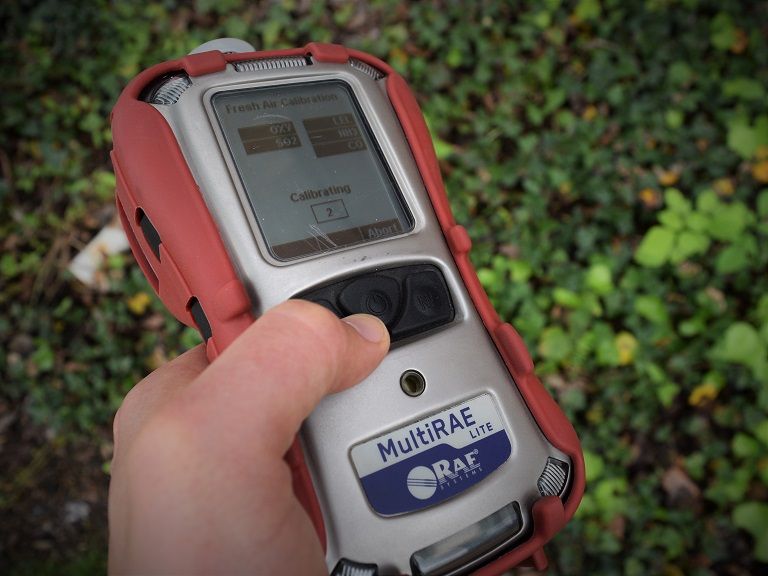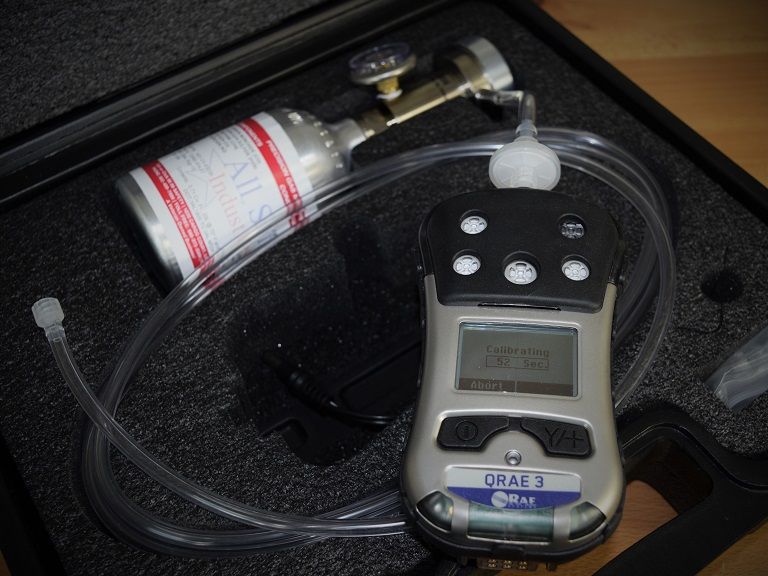 Conducting preliminary diagnostics and fresh air cal outside with a MultiRAE Lite.
Conducting preliminary diagnostics and fresh air cal outside with a MultiRAE Lite.
1. Use filters as recommended by the manufacturer
Most gas meters use a filter of some kind to keep dust and liquids away from the internals. A meter without a filter is vulnerable and more prone to needing repair. Filters are cheap. Use them and replace them regularly.
2. Test the pump if your meter has one
A pumped gas detector cannot sufficiently pull a sample if the pump is weak. Test the pump by placing a finger over the inlet before using the monitor. If the pump stall is triggered, the pump should be good to go.
3. Don’t expose LEL sensor to poisons
Silicone-containing, lead-containing, or sulfur-containing compounds can kill catalytic bead LEL sensor response fairly quickly. Even Armor All on the dashboard could be enough to cut the sensor’s life short. If you suspect your meter has been exposed to a poison, replace the filters. If you choose to clean your meter, do so with a damp cloth and skip the solvents, since these could also contain sensor poisons.
4. Only fresh air cal in fresh air
The most frequent cause of negative readings is a bad fresh air cal. Conducting a fresh air cal in a garage or on a manufacturing line where toxic gases or flammables are present might result in negative readings. If you don’t have access to fresh air, use a zero air calibration cylinder.
5. Calibrate regularly
Timing may vary based on manufacturers’ recommendations, but it is important to calibrate periodically. Calibrations are quick and are essential making sure your gas meter reads accurately when exposed to gas.
 Our inCase Calibration Kits are convenient portable gas detection systems.
Our inCase Calibration Kits are convenient portable gas detection systems.
6. Bump test before each use
Don’t rely on fresh air values alone. A reading of 0% LEL means nothing if your sensor is poisoned and no longer responding to gas. A quick bump test will let you know if your sensors are working or not.
7. Don’t use expired gas
The expiration date on the calibration gas cylinder should be strictly followed. Calibration gas naturally breaks down on its own. If the gas no longer coincides with the concentration listed on the label, it’s impossible to perform a reliable calibration.
8. Replace sensors before they fail
It is important to keep your meter up to date. Plan on replacing the O2 sensor when the old one expires. It’s good practice to replace the LEL sensor at the same time, especially if exposed to poisons or high concentrations of combustible gases. Toxic sensors should be monitored and replaced when response is less than ideal. When your gas detection instrument is discontinued, upgrade to a current model.
9. Take a systems approach
Good gas detection policy is not just a matter of owning and maintaining equipment. Equipment is just one part of a broader system. Cal stations, wireless communication technology, and kits like our own inCase Calibration Kits are intended to be catalysts for a successful gas detection program.
10. Use your meter for what it was designed to do
Plain and simple, a gas detectors can’t save your life if it’s sitting on the shelf. Owning a meter is not enough. The basic operation and testing of most gas meters is relatively easy. Flammable or toxic gas is not something to be trifled with. Use the right meter for the job, and chances are you will be safe.